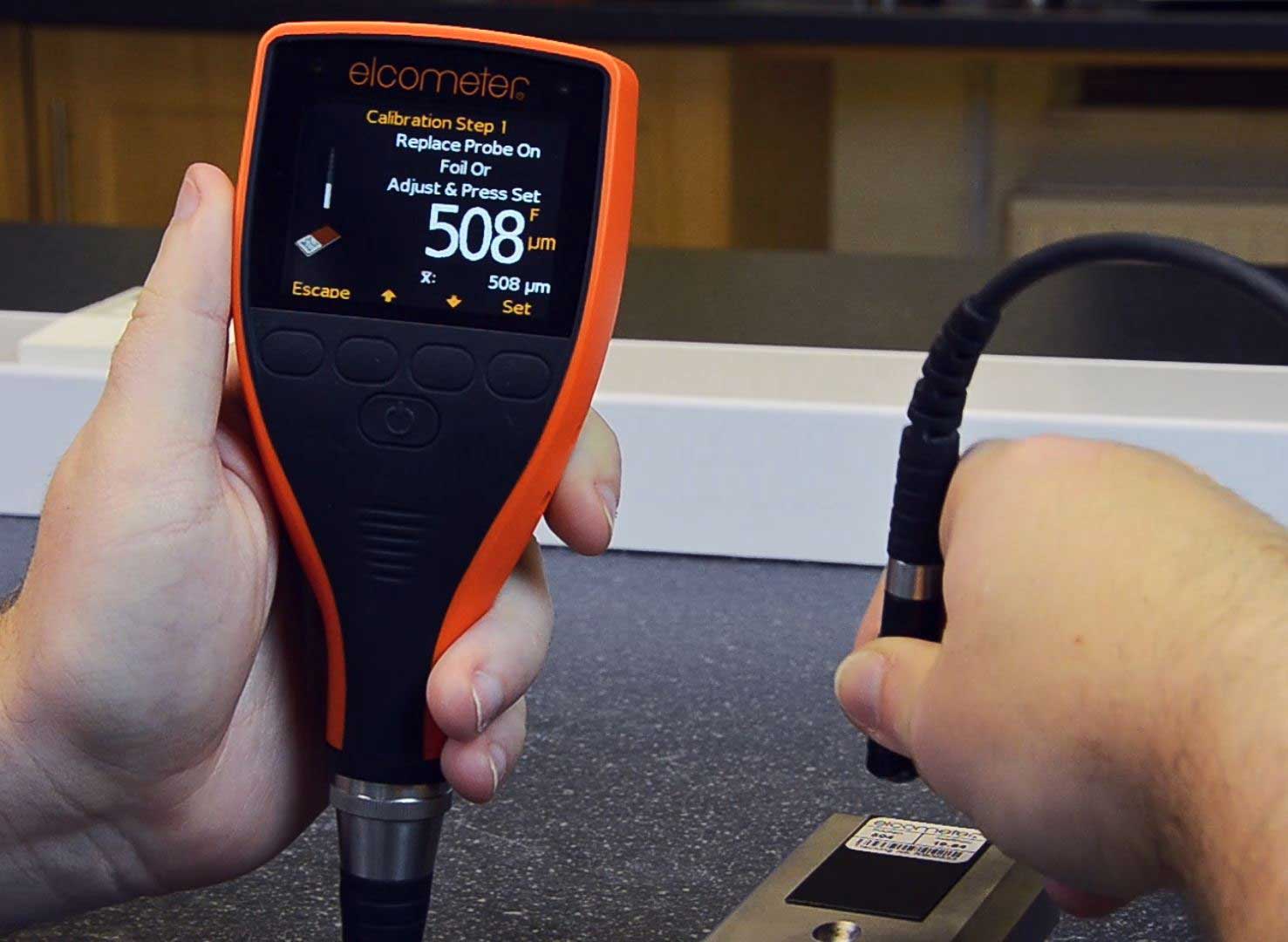
Calibration Adjustment
The true calibration of a dry film thickness gauge can only be done by the manufacturer, an authorised agent of the manufacturer, or an authorised calibration laboratory. The calibration must be carried out in controlled conditions following a documented procedure. The gauge should be re-calibrated from time to time, but that period depends very much on the frequency of use of the gauge and the quality policy of the company using the gauge.
The word calibration, when related to user set-up of the gauge, is used throughout the industry, however, the correct term is verification, as used in the standards. To avoid further confusion, and to use the terminology employed by most manufacturers, in this section we will use the word calibration when referring to user verification.
An instrument is only as good and as accurate as its calibration
Electronic and mechanical instruments are calibrated using certified standards or precision foils. Certified, pre-coated standards are coated pieces of metal (steel or aluminium) with known thicknesses of coating on them. Precision foils are small plastic sheets of known thicknesses and are placed on the bare substrate to calibrate the gauge.
It is important to use the bare substrate, if possible, because the shape and physical properties (electrical and magnetic) can affect the calibration. A popular misconception is to use a zero plate to calibrate on in the office and then to take the gauge on-site to measure the coating on a pipe, for example.
In this case, it is likely that the pipe is a different grade material (magnetism or conductivity) than the zero plate and also that the shape is different. These two properties alone will make the calibration less accurate.

To ensure that the calibration is as accurate as possible, a foil which is slightly thicker than the target/nominal paint thickness should be chosen. Generally, instruments have various calibration methods to choose from. The most common options are for smooth surfaces and rough surfaces.
Smooth Calibration
A smooth calibration is performed using a foil and a smooth substrate. The foil is placed upon the smooth base and several readings are taken. The value of the gauge is then set to that of the foil. The foil is then removed and several readings are taken on the bare uncoated base metal and the gauge value is adjusted to zero.
Rough Calibration
If the substrate is rough or has a profile, then a slightly different calibration technique is used. A ‘rough’ or a ‘2 point calibration’ is used in order to limit the range and make the measurements more accurate. The method here is that two calibrated foils are used. One is thicker than the target coating and one is thinner than the target coating. The calibration is carried out by placing the thick foil on the uncoated blasted/rough sample and then taking several readings through the foil.
The result on the screen is then adjusted to that of the thicker foil. Then the same procedure is carried out using the thinner foil on the uncoated substrate. In this way, the "calibrated" range of the instrument is reduced and accuracy within this range is increased. The gauge will then measure the thickness of the coating over the peaks on a profiled surface.
Offset Calibration
Additional techniques to accommodate profiled substrate include setting an offset and collecting by counted average. Using an offset calibration is a technique to remove a pre-set value from the measured data. It can be used if the profile has already been measured or is known. Therefore the profile can be set as an offset and this value is removed from the measured coating value before the result is displayed on the LCD. For example, if the offset was set to 25µm and the gauge read 100µm, the result displayed on the LCD would be 75µm.
This technique can also be used when working with multiple paint layers. For example, the primer could be applied and measured as ‘x’ µm. The value ‘x’ can then be entered as the offset, such that the first coating can be measured and the primer thickness is automatically removed from it. The result is then the thickness of the first coating only.
It should be remembered that the gauge is only as good as the calibration. When verifying the accuracy of the gauge, the accuracy is defined using the following formula;

For example, if the gauge accuracy is ±2% and the Standard's accuracy is ±5%, then the combined accuracy of the gauge would be;

How Elcometer Can Support with Calibration Queries
We understand the severity of the repercussions of an incorrectly calibrated Coating Inspection Gauge and we want to make sure your piece of Elcometer equipment can provide you with accurate readings from the get-go.
If you have any further questions regarding the calibration of your Elcometer gauge, our support team are always happy to help. To get in touch, visit the contact us page to locate your nearest distributor and speak to them directly.
